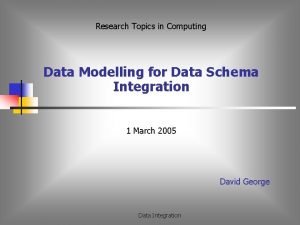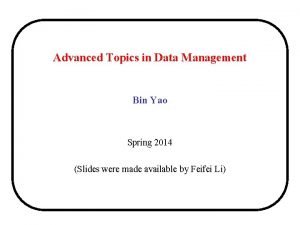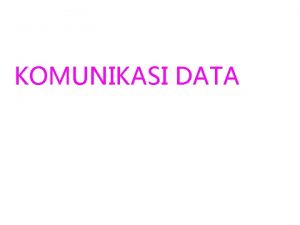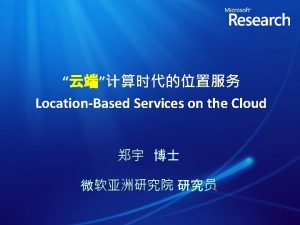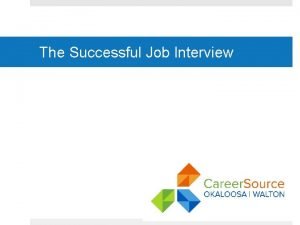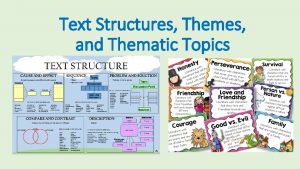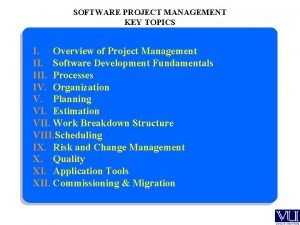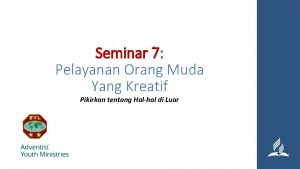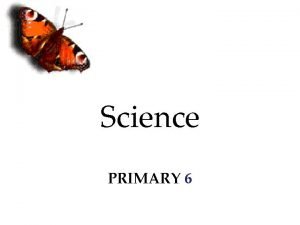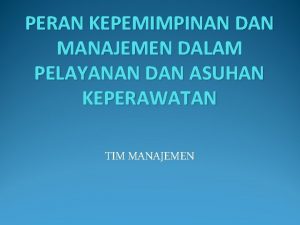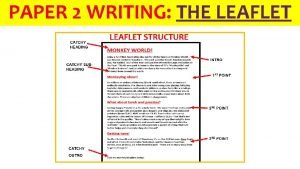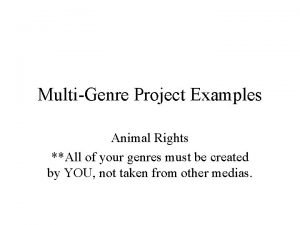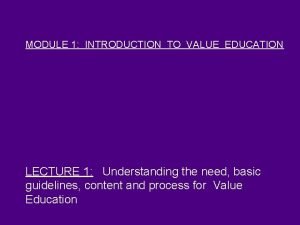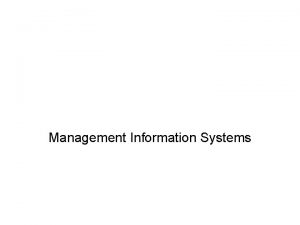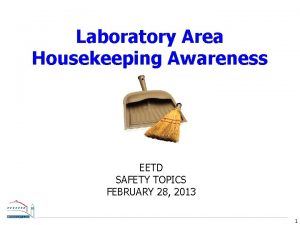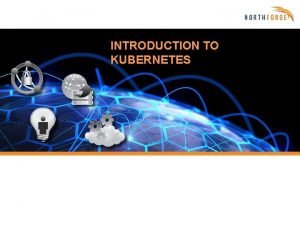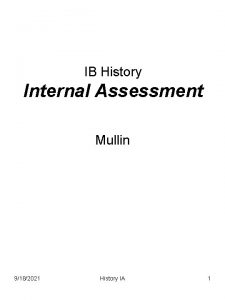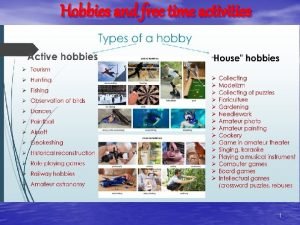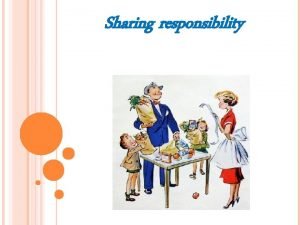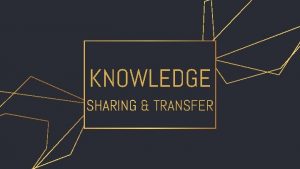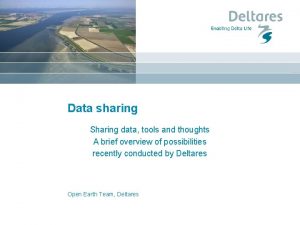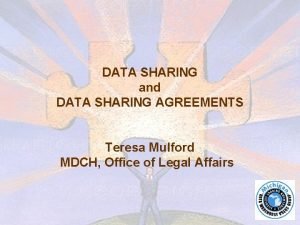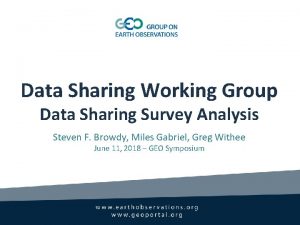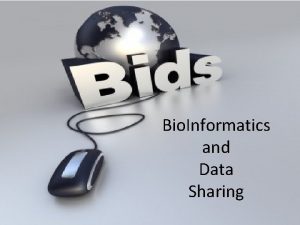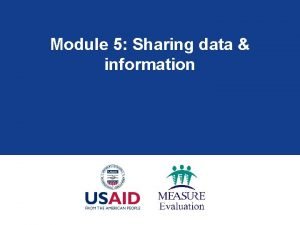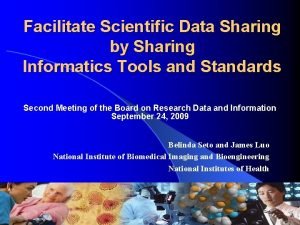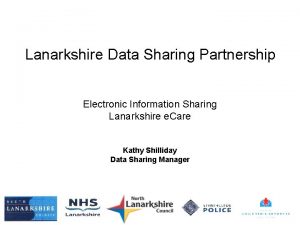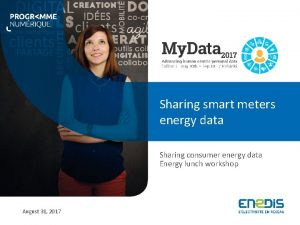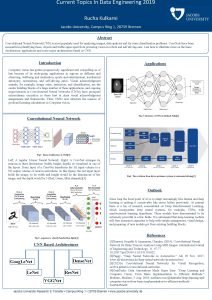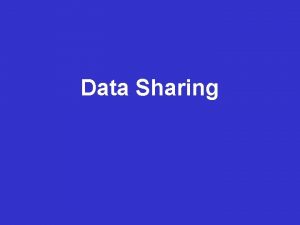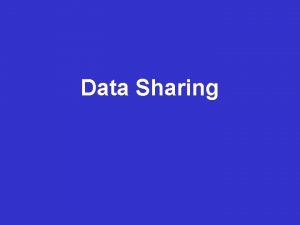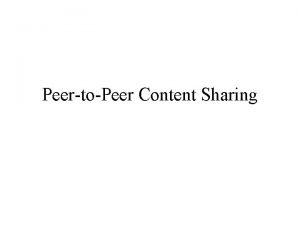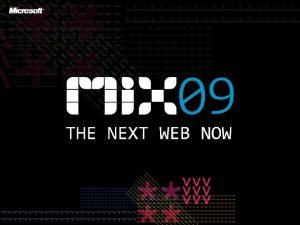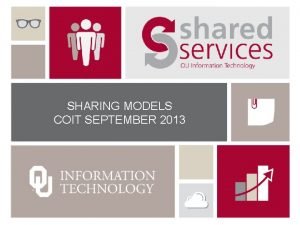Module 10 Data Sharing Module Topics Data Sharing
















































- Slides: 48

Module 10 Data Sharing

Module Topics Data Sharing Within the Data Lifecycle Value of Data Sharing Concerns About Data Sharing Making Data Sharable Data Sharing

Learning Objectives After completing this lesson, the participant will be able to: ◦ ◦ ◦ discuss data sharing considerations within the data life cycle recognize the benefits of sharing scientific data address concerns about sharing data outline a process for making data sharable identify mechanisms for sharing data Data Sharing

The Data Life Cycle Plan Publish & Share Preserve Data Sharing Acquire & Process Analyze

The Data Life Cycle Data sharing should be addressed throughout the data life cycle 1 Collect Assure Analyze Describe Integrate Discover Deposit Preserve Data Sharing

The Data Life Cycle Several stages require critical attention to ensure effective data sharing Describe document the data content, character and process Deposit store the data in a location from which it can be accessed Preserve select storage formats and media with long term use in mind Discover publish information about the data so that others can find it Data Sharing

Why Share Data? Data sharing requires effort, resources, and faith in others. Why do it? For the benefit of: ◦ ◦ the public the research sponsor the research community the researcher Data Sharing

Value of Data Sharing To the Public A better informed public yields better decision making with regard to: ◦ ◦ planning policies social choices personal lifestyle and health Data Sharing

Value of Data Sharing To the Research Sponsor Organizations that sponsor research must maximize the value of research dollars Data sharing enhances the value of research investments by enabling: ◦ ◦ verification of performance metrics increased return on investment advancement of the science reduced data duplication Data Sharing

Value of Data Sharing To the Scientific Community Access to related research enables community members to: ◦ build upon the work of others and further, rather than repeat, the science 4 ◦ share resources and perspectives so that comprehension is expanded and enhanced 5 ◦ perform meta analyses that cannot be performed with individual datasets or laboratories 5 Data Sharing

Value of Data Sharing To the Scientific Community Access to related research enables community members to (cont’d): ◦ increase transparency, reproducibility and comparability of results 5 ◦ expand methodology assessment, recommendations and improvement 6 ◦ educate new researchers as to the most current and significant findings 6 Data Sharing

Value of Data Sharing To the Scientists that share data gain the benefit of: ◦ research sponsor recognition as an authoritative source and wise investment ◦ improved data quality due to expanded use, field checks, and feedback ◦ greater opportunity for data exchange ◦ improved connections to scientific network, peers, and potential collaborators Data Sharing

Concerns About Data Sharing Even if the value of data sharing is recognized, concerns remain as to the impacts of increased data exposure. Data Sharing

Concerns About Data Sharing Concern Solution inappropriate use due to misunderstanding of research purpose or parameters metadata security and confidentiality of sensitive data metadata lack of acknowledgement / credit metadata loss of advantage when competing for research dollars metadata Data Sharing

Concerns About Data Sharing Concern Solution inappropriate use due to misunderstanding of research purpose or parameters provide rich Abstract, Purpose, Use Constraints and Supplemental Information where needed security and confidentiality of sensitive data • the metadata does NOT contain the data • Use Constraints specify who may access the data and how lack of acknowledgement / credit specify a required data citation within the Use Constraints • loss data insight competitive advantage when vying for research dollars create second, public version with generalized Data Processing Description Data Sharing

Concerns About Creating Metadata Even if the value of data documentation is recognized, concerns remain as to the effort required to create metadata that effectively describe the data. Data Sharing

Concerns About Creating Metadata Concern Solution Workload required to capture accurate robust metadata Incorporate metadata creation into data development process – distribute the effort Time and resources to create, manage, and maintain metadata Include in grant budget and schedule Readability / usability of metadata Use a standardized metadata format ‘Profile’ standard to require Discipline-specific information and use ontologies specific values Data Sharing

Making Data Sharable Step One: Create robust metadata that is discoverable ◦ specify geography and time periods ◦ use discipline specific theme, place and temporal keywords, thesauri, and ontologies ◦ describe attributes ◦ include links to associated data catalogues, data downloads, project websites, etc. Data Sharing

Making Data Sharable Step Two: Include archival and reference information ◦ properly formatted data citations for the data and all sources ◦ Universally Unique Identifiers (UUID) that uniquely identify your data and help to link the data with the metadata See the Data. ONE unique identifier guidance at: http: //mule 1. dataone. org/Architecture. Docs-current/design/PIDs. html Data Sharing

Making Data Sharable Step Three: Have data contributors reviewed your metadata to ensure validity and organizational ‘correctness’? ◦ ◦ are the processes described accurately? are all contributions adequately identified? has management reviewed the product and documentation? is the funding organization properly recognized? Data Sharing

Making Data Sharable Step Four: Publish your metadata via: Data Portals / Clearinghouses Federal geodata. gov National Biological Information Infrastructure (NBII) Communities of Practice Knowledge Network for Biodiversity (KNB) Data Portal Long Term Ecological Research (LETR) Network Data Portal Data Sharing

Making Data Sharable Step Four: Publish your metadata and/or data via: (cont’d) Other Online Resources: Project and/or Program websites Links within online lessons and outreach products Web-accessible folders (WAF) Community or Public Cloud Data Sharing

Best Practices Document and publish data using standards Promote data use via presentations and meetings Solicit feedback from data users and address identified issues Monitor publications and websites for data use and address misapplications Data Sharing

Data in Real Life Data Sharing In 2003, a group of scientists from the National Institutes of Health, the Food and Drug Administration, drug and medical imaging industries, universities, and nonprofit groups joined in a collaborative effort to find the biological markers that show the progression of Alzheimer’s disease in the human brain. The goal of this project was to do research on a massive scale that would involve sharing and making accessible all the data uncovered to anyone in the world with a computer. Dr. John Trojanowski an Alzheimer’s researcher at the University of Pennsylvania stated, “It’s not science the way most of us have practiced it in our careers. But we all realized that we would never get biomarkers unless all of us parked our egos and intellectual-property noses outside the door and agreed that all of our data would be made public immediately. ” http: //www. nytimes. com/2010/08/13/health/research/13 alz heimer. html

Summary Data sharing adds value to the data It is the responsibility of the researcher to share their data Metadata supports data accountability, liability, and usability Sponsors expect, some require, data to be shared Data Sharing

References 1. 2. 3. 4. Guide to social science data preparation and archiving: Best practice throughout the data life cycle, 4 th edition (ICPSR, 2009) Australian Bureau of Statistics, National Statistical Service (2009) A good practice guide to sharing your data with others, Vers. 1. http: //www. nss. gov. au/nss/home. nsf/NSS/E 6 C 05 AE 57 C 80 D 737 CA 25761 D 0 02 FD 676? opendocument Piwowar, H. A. (2011). A new task for NSF reviewers: Recognizing the value of data reuse. http: //researchremix. wordpress. com/2011/05/28/dear-nsfreviewers/ Piwowar HA, Becich MJ, Bilofsky H, Crowley RS, on behalf of the ca. BIG Data Sharing and Intellectual Capital Workspace (2008) Towards a Data Sharing Culture: Recommendations for Leadership from Academic Health Centers. PLo. S Med 5(9): e 183. doi: 10. 1371/journal. pmed. 0050183 Data Sharing

References 5. 6. 7. 8. Teeters, J. L. , Harris, K. D. , Millman, K. J. , Olshausen, B. A. , Sommer, F. T. (2008). Data Sharing for Computational Neuroscience. Neuroinform, DOI 10. 1007 s 12021 -008 -9009 -y (http: //redwood. berkeley. edu/fsommer/papers/teetersetal 08. pdf) National Institute of Health (NIH) (2003). NIH Data Sharing Policy and Implementation Guidelines. Roxana Geambasu, Steven D. Gribble, Henry M. Levy. "Cloud. Views: Communal Data Sharing in Public Clouds. " In Proceedings of the First USENIX Workshop on Hot Topics in Cloud Computing (Hot. Cloud), San Diego, USA, June 2009. Paper: [PDF]; Presentation: [PPT], [PDF]; [BIBTEX]. Niu, J. (2006). Reward and Punishment Mechanisms for Research Data Sharing. IASSIST Quarterly, Winter 2006. Data Sharing

References Borgman, C. L. Research Data: Who will share what, with whom, when, and why? In Proceedings of the China -North American Library Conference, Beijing , September 2010. (http: //works. bepress. com/borgman/238/) 9. Data Sharing

What did you learn?

1. Which of the following is not a benefit of sharing data? It allows for access to resources and the enhancement of understanding in the field Organizations that sponsor research must maximize their investments It will create confidentiality of sensitive data It will provide opportunities for data exchange and networking Data Sharing

Think about this … You might want to review this section. Return Data Sharing

Excellent! Proceed to the next question Next Data Sharing

2. ________ specify who may access the data and how. The database software can Use Constraints can The metadata can The data user can Data Sharing

Think about this … You might want to review this section Return Data Sharing

Excellent! Proceed to the next question Next Data Sharing

3. Concerns as related to the workload required to capture metadata may be addressed by incorporating metadata development into _______. a budget and grant proposal metadata standards a software program a backup system Data Sharing

Think about this … You might want to review this section Return Data Sharing

Excellent! Proceed to the next question Next Data Sharing

4. Which of the following will not help make your metadata discoverable. Providing detailed information as regards to geography and time periods of data set Providing any attributes and links to data catalogues and project websites Publish your metadata Creating of Use Constraints Use discipline specific themes, place Names, and kewords Data Sharing

Think about this … You might want to review this section Return Data Sharing

Excellent! Proceed to the next question Next Data Sharing

5. Readability and usability of metadata can be addressed with_______. a standardized metadata format Use Constraints links to data catalogues detailed data information Data Sharing

Think about this … You might want to review this section Return Data Sharing

Excellent! Proceed to the next question Next Data Sharing

6. Best practices based on established metadata standards should follow which of the following. Promotion and presentation Documentation and publishing Data user feedback All of the above Data Sharing

Think about this … You might want to review this section Return Data Sharing

Excellent! You have completed this learning module. Next Data Sharing

Before you go. . . We want to hear from you! CLICK the arrow to take our short survey. Data Sharing
 C device module module 1
C device module module 1 Data warehouse research topics
Data warehouse research topics Bin yao
Bin yao Komunikasi data merupakan gabungan dua macam teknik yaitu
Komunikasi data merupakan gabungan dua macam teknik yaitu Sharing data
Sharing data Improved data sharing in dbms
Improved data sharing in dbms Magazine article topics for students
Magazine article topics for students Year 9 persuasive writing
Year 9 persuasive writing Thematic paragraph
Thematic paragraph Behavioural training topics
Behavioural training topics Skill 27 listen for answers in order
Skill 27 listen for answers in order Purpose of interview
Purpose of interview Informative and surprising essay topics
Informative and surprising essay topics Theme of death in the great gatsby chapter 4
Theme of death in the great gatsby chapter 4 What is a thematic topic
What is a thematic topic Table topic tips
Table topic tips Subjective writing examples
Subjective writing examples Prepare an individual talk
Prepare an individual talk Software project management topics
Software project management topics Sociolinguistics topics
Sociolinguistics topics Smaw welding lesson plans
Smaw welding lesson plans Pertanyaan tentang materi seminar
Pertanyaan tentang materi seminar Adventist youth ministries
Adventist youth ministries Primary 6 syllabus
Primary 6 syllabus Customer service discussion topics
Customer service discussion topics Problem and solution thesis statement
Problem and solution thesis statement Fun philosophical chairs topics
Fun philosophical chairs topics Persuasive appeals
Persuasive appeals Yg dimaksud pemimpin perawatan adalah
Yg dimaksud pemimpin perawatan adalah How to structure a leaflet
How to structure a leaflet In an outline the relationship of topics
In an outline the relationship of topics Osslt essay practice
Osslt essay practice Newspaper report topics
Newspaper report topics Multi genre project topics
Multi genre project topics What are the basic guidelines of value education?
What are the basic guidelines of value education? Types of information systems
Types of information systems Software architecture topics
Software architecture topics February safety topics
February safety topics Operation research
Operation research Kubernetes topics
Kubernetes topics Texas hosa competitive events
Texas hosa competitive events Original oratory topics
Original oratory topics Lac minutes sample
Lac minutes sample History ia rubric 2021
History ia rubric 2021 English b ib themes
English b ib themes Emily edison nutrition
Emily edison nutrition Question about free time
Question about free time English hl essay line of inquiry examples
English hl essay line of inquiry examples Introductions for persuasive essays
Introductions for persuasive essays

